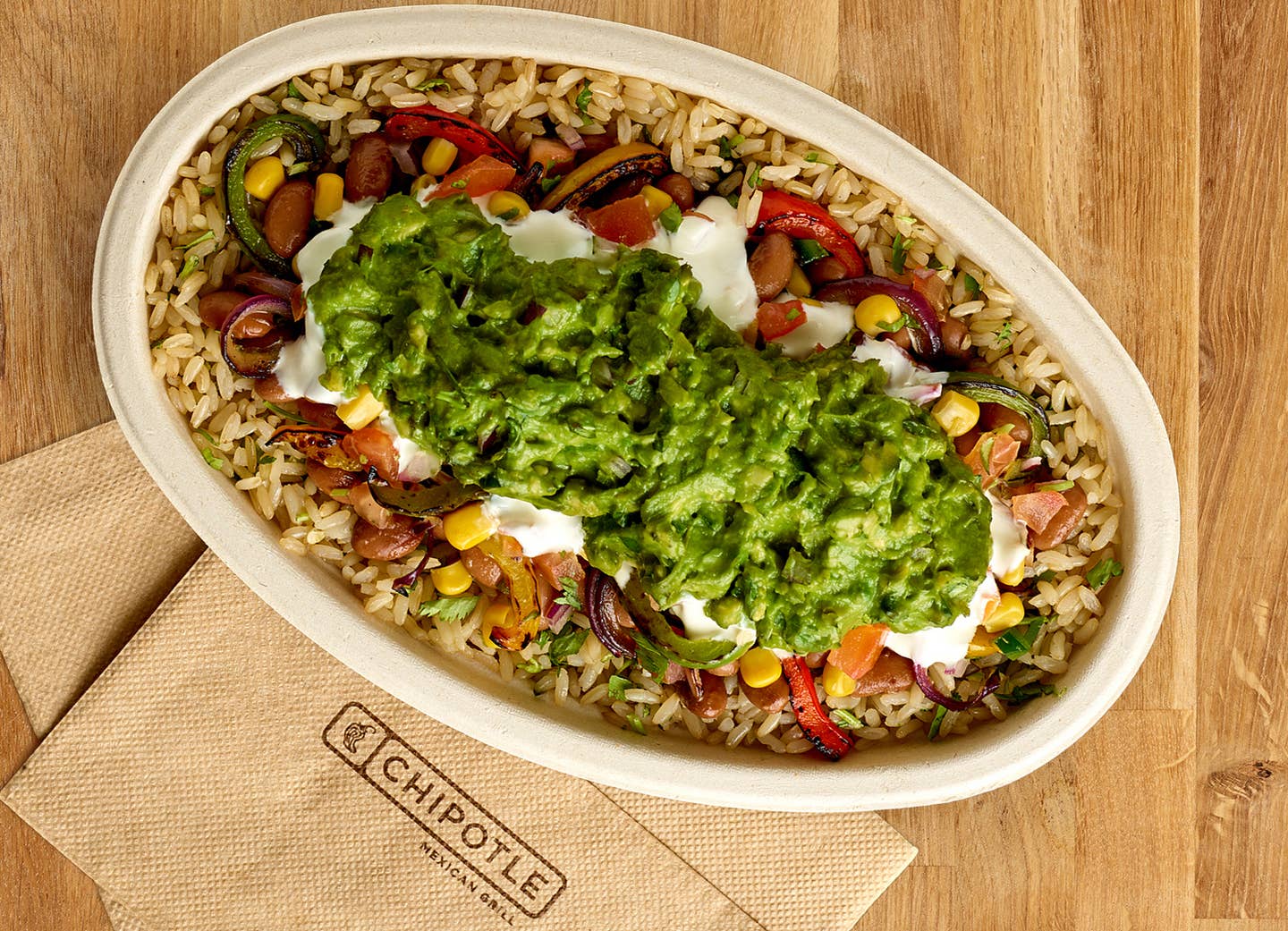
One Quarter of All Consumers Are Cutting Meat From Their Diets
Nearly a quarter of the world’s population is cutting meat from their diets, as consumers become more concerned about sustainability and animal agriculture. A new report from the global market research company Euromonitor International called the Voice of the Consumer: Health and Nutrition Survey 2021 found that 23 percent of global consumers have started lowering their meat intake. The survey found that following the COVID-19 pandemic, consumers started limiting meat intake due to harmful environmental factors and personal health concerns.
"The COVID-19 pandemic made consumers more aware of the impact their individual actions have on society,” Senior Analyst at Euromonitor International Nozomi Hariya said. “An example of this are flexitarians, who reduce their consumption of animal products, and driving growth of plant-based alternatives.”
The survey found that most respondents decided to change their dietary lifestyle to adopt a healthier lifestyle. The study also found that 57 percent of global consumers believed that their individual actions and diets could help change the world, helping prevent devastating environmental harm caused by the climate crisis.
The global survey highlighted that the plant-based food market experienced a 9 percent growth between 2019 and 2020. The market exceeded $40 billion worldwide, showing a substantial shift in consumer demand worldwide. From plant-based meat alternatives to the alternative milk market, consumer interest has been rapidly increasing over recent years. A significant portion of this influence can be attributed to the worsening climate crisis.
Euromonitor’s report also found that the country with the lowest interest in plant-based diets is Japan. Only 25 percent of participants in Japan believe that personal dietary choices can make a difference on a global scale.
Younger generations worldwide have strongly held beliefs about diet, with many of these consumers making dietary decisions that are aligned with their environmental concerns. The report explains that new sustainability education and access to social media allows for the younger generation’s increased awareness of environmental and animal agricultural issues.
Earlier this summer, the UN’s IPCC released a “code red” report that directly linked the byproducts from animal agriculture including greenhouse gases and waste to climate change. The report is meant to serve as a final warning that human activity is reaching a threshold that will be impossible to fix. Within the report, scientists determined that the food industry would need to be redesigned to prevent these byproducts from reaching an irreversible level.
“Added-value benefits beyond sustainability, such as health benefits or affordability, is critical to attract consumers,” Hariya said.“The use of technology and work in partnership across industries and countries will also be key to promote sustainability.”
Researchers at Oxford University released a study in 2018 that found that nearly 60 percent of greenhouse gas emissions could be directly tied to the global meat and dairy industries. The report highlighted that the animal agricultural industry would need to either experience significant change or consumers would need to reduce meat intake to curb environmental disaster. The study continued by explaining that if individual consumers could remove animal products from their diets, they could decrease their carbon footprint by 73 percent.
“A vegan diet is probably the single biggest way to reduce your impact on planet Earth, not just greenhouse gases, but global acidification, eutrophication, land use, and water use,” the study’s lead author Joseph Poore said at the time.
Consumers worldwide recognize the dangerous consequences stemming from the animal agricultural industry. As governments and companies continue to innovate the food systems, consumers have altered their dietary preferences to maximize personal and global health.
Recently, the Good Food Institute (GFI) released its 2020 State of the Industry Report: Plant-Based Meat, Eggs, and Dairy that found that nearly 32 percent of people identified as “mostly vegetarian.” Although most consumers do not follow a fully plant-based diet, a substantial amount of consumers realize the benefits of plant-based eating. The report goes on to explain that nearly 60 percent of consumers think that plant-based eating is central to addressing the climate crisis.
“With an increased global focus on reaching net-zero emissions, the shift to climate-friendly, sustainable protein production presents significant sales and investment opportunities,” the GFI report reads. “Companies and investors interested in plant-based innovation recognize its transformative potential to achieve a carbon-neutral food system, and they are positioning themselves to lead this transition.”
Top 10 Sources of Plant-Based Protein According to a Nutritionist
1. Seitan
Protein: 21 grams in ⅓ cup (1 ounce) Seitan isn’t as popular as other proteins, but it should be! Made from wheat gluten, its texture resembles ground meat. It’s often used in pre-made veggie burgers or meatless nuggets. Seitan has a savory taste, like mushrooms or chicken, so it works well in dishes that call for an umami flavor. With a hearty texture, seitan can be the star of practically any vegan main dish. Add it to stir-fries, sandwiches, burritos, burgers, or stews. Like tofu, seitan will take on the flavor of any marinade or sauce.
2. Tempeh
Protein: 16 grams in 3 ounces If you like a protein with a bit of bite, add tempeh to your list. Made from fermented soybeans, tempeh has a slightly nutty flavor and is pressed into a block. Most varieties include some sort of grains, such as barley or millet. Not only is tempeh a plant-based source of protein, but the fermentation process also creates good-for-your-gut probiotics. You can cut tempeh right off the block and use it as the base for a sandwich or pan-fry it with some sauce. Or, crumble, heat, and make it the star of your next taco night.
3. Lentils
Protein: 13 grams in ½ cup cooked Lentils come in multiple varieties--red, yellow, green, brown, black. Regardless of the type lentils are small but mighty nutritional powerhouses. They pack a good amount of protein as well as iron, folate, and fiber. When cooked, brown lentils retain their texture and can be the base for a grain bowl or make a hearty substitute for ground meat in meatballs, lasagna, tacos or Bolognese. Red lentils are a bit softer and make a nice add-in for a hearty soup, chili, or stew.
4. Hemp Seeds
Protein: 10 grams in 3 tablespoons Hemp seeds are a tender and nutty seed, derived from the hemp plant. They contain good amounts of omega-3s, iron, folate, magnesium, phosphorus, and manganese. They are also a solid source of both soluble and insoluble fiber, which helps to keep your digestive tract healthy and humming. Because they pack a double whammy of protein and healthy fats, hemp seeds can help satisfy hunger, preventing those embarrassing stomach growls as you slog your way to your lunch break. Add them to your morning smoothie or sprinkle them on top of yogurt, oatmeal, or even a salad.
5. Tofu
Protein: 9 grams in 3 ounces (⅕ of a block) Made from coagulated soybeans, tofu is the most popular plant-based protein. Soy is one of the only meatless "complete" proteins, meaning that it contains all of the essential amino acids that the body can’t make but needs for muscle and immune function. With 15% of your daily calcium needs, tofu is also a good replacement for dairy.
6. Edamame
Protein: 9 grams of protein in ½ cup This sushi appetizer is a nutrient powerhouse, so eat it anytime. Edamame is really just another name for soybeans in their pods. Let’s list off some stats--a small ½-cup serving of edamame has 9 grams of protein, 15% of your daily vitamin C, 10% of your daily iron and 16% of your daily fiber. Keep a bag of edamame in your freezer to serve as a fun-to-eat side dish or opt for the shelled variety to toss into salads or a grain bowl.
7. Quinoa
Protein: 8 grams per cup (cooked) Quinoa is an ancient grain and since it's gluten-free a great choice for anyone avoiding gluten. Add it to your burger recipe to create filling texture, or instead of meat in your taco or burrito. Quinoa is among the healthiest foods on the planet, delivering phytonutrients that have anti-inflammatory qualities, so keep it in your pantry for any meal that needs a filling grain. Just remember to soak it and rinse before cooking to get rid of any bitter taste.
8. Black Beans
Protein: 7 grams in ½ cup (canned) Eating beans on the regular might as well be a prerequisite for a plant-based diet. Not only are canned black beans inexpensive, but they also contribute 10% of your daily iron and 25% of your daily fiber to your diet. For less than $1 a can, beans can be the star of tacos, quesadillas, salads, soups, burgers, or dips.
9. Amaranth
Protein: 6 grams in ⅔ cup (cooked) Chances are you’ve never cooked amaranth. But you should, since this tiny, gluten- free grain is packed with almost 30% of your daily fiber and 20% of your daily iron. Cook it like a traditional grain to yield a soft, porridge-like texture. Many people add amaranth to other a hot breakfast cereal mixture, like oats and quinoa. It also pops like popcorn. Toss it in a pot with some oil and wait for it to pop up into a nutritious snack.
10. Peas
Protein: 5 grams in ⅔ cup If peas were one of your most hated veggies as a kid, it’s time to give them another chance. These green beans are a great low-calorie protein to keep in your freezer. Sure, they don’t always taste great when steamed or microwaved (who wants to eat mushy, overcooked peas?), but they do blend well into a yummy puree that can be slathered on toast. To amp up the flavor, add some lemon juice or mint to your mix before you blend.
More From The Beet






